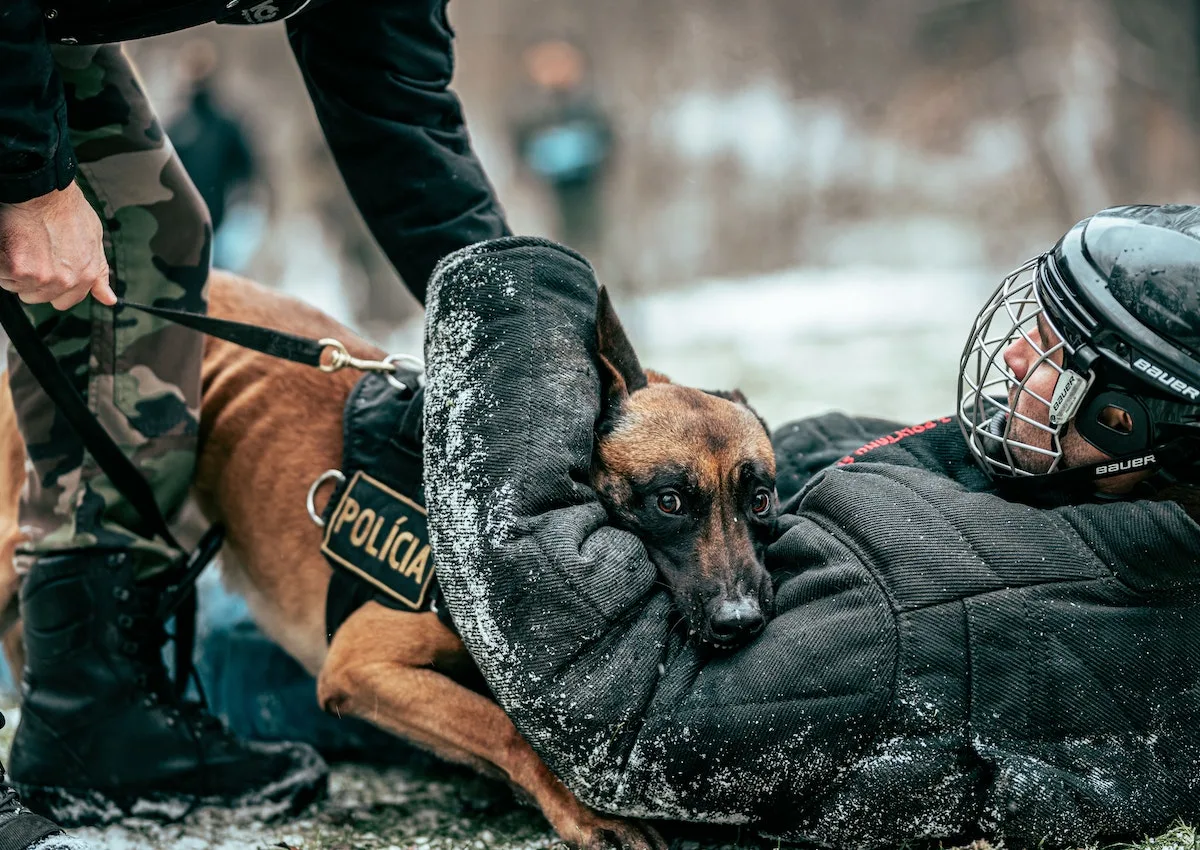Dog bite training is commonly associated with teaching dogs, particularly working dogs like police or security K9s, how to bite on command and release on command. The training also emphasizes control, discipline and ensuring the dog only bites when necessary and appropriate.

The many facets of dog bite training
Purpose
There are multiple purposes for training a dog to bite. The most common ones include:
Police and military: Dual purpose police dogs, specifically Belgian Malinois police dogs are utilized for apprehending suspects or during specific missions.
Personal protection: Some individuals train their dogs for personal security. Check out this guide to protection dog training for a deep dive on dog bite training.
Sport: Activities like schutzhund or IPO involve bite work as a sport, emphasizing control and precision.
Guard and security: Dogs might be trained to protect properties or specific areas.
Bite Development Techniques
The ways in which you train a dog on how to bite vary. Most dogs will progress through an array of techniques during different times of their training.
Puppy bite work: This mostly consists of using soft toys to develop the bite grip at a young age.
Bite pillows: When dogs grow slightly older, they can progress from toys to bite pillows which are larger and have different textures.
Bite sleeves: Protect the trainer’s arm and teaches the dog to aim for the arm area. Are you curious what the bite force of a Belgian Malinois is? Imagine that impact on your arm during a bite work training session!
Full suits: Used for advanced training; these padded suits allow dogs to bite different areas of the body.

Training Techniques
Targeting: This training technique teaches the dog where to bite (e.g., the arm or leg).
Control: A critical skill included in bite work training is teaching the dog when to bite and when to release.
Search and apprehend: For police and military dogs, finding and safely apprehending a suspect is a key part of bite work training.
Building drive: Using toys and play to build the dog’s desire to chase and bite. This technique taps into a dog’s prey drive.
Outing: Teaching the dog to release the bite immediately when commanded.
Safety considerations of dog bite training
Before beginning bite work training, it’s important to give consideration to certain safety criteria.
Muzzle training: Before bite training, a dog should be comfortable wearing a muzzle to ensure safety during initial sessions. Find the best muzzle for your dog before beginning.
Padded equipment: Always use well-padded equipment to prevent injuries to trainers.
Controlled environment: Training should take place in a controlled environment to reduce unexpected stimuli. This consideration is important whether teaching something as simple as recall to your dog or complex, like bite work.
Regular health checks: Ensure the dog doesn’t have dental or health issues that could be aggravated by bite work.

Ethical Considerations
Positive reinforcement: Use reward-based methods rather than punitive ones to foster trust and cooperation between the dog and yourself.
Dog selection: Selecting the right dog for this type of training is important. Every dog has the ability to bite, but not every dog has the ability to be trained to bite on command and in a controlled manner. Some of the best candidates for this type of training include the Belgian Malinois and Dutch Shepherd.
Avoid aggression: The goal isn’t to make the dog fearful or aggressive, but to make them controlled. Fearful aggressive dogs can be unpredictable and dangerous.
Regular socialization: Ensure the dog is well-socialized and balanced. Ideally they should be friendly and approachable when not “working.”
Laws and Regulations
Many regions have laws about owning and training bite-trained dogs. Some areas in the United States even have breed-specific legislation (BSL). Ensure you’re compliant with these regulations.
Bite-trained dogs must be under control at all times. Owners can be held liable for any injuries their dogs cause.
Professional Training
If you’re considering bite training for your dog, it’s essential to seek professional trainers who have experience and a good reputation in this field.
Remember, bite training is a serious responsibility. It’s not suitable for all dogs or all owners. A bite-trained dog should be a disciplined, controlled and well-balanced animal.

